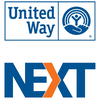HISTORICAL PERSPECTIVES
United Way mobilization of caring communities: a feast of history and culture and a famine of books
Author: Dick Aft, United Way Historian and UW NEXT Emeritus Board Member
July, 2024
Martin Luther King, Jr. said, "We are not the makers of history, we are made by history.” So, what about United Way history? How has it contributed to today’s United Way? How much has been preserved? By my count, only nineteen books have been published during nearly 140 years since the beginning of community-wide social planning and federated fund-raising in the United States.
Here are a few peeks at several of the authors’ contributions to published United Way history. Perhaps their words will prompt readers to add their own publications to the list.
The United Way movement’s earliest days were described in 1927 when William Norton wrote, The Cooperative Movement in Social Work. In his publication, he identifies the strengths and weaknesses of seven different models adopted as United Way took shape during the late 19th century. They ranged from, “a new development in New York where the members of the fur trade are now trying to arrange a joint charitable fund” to the efforts of Denver’s civic, religious and business leaders who “envisioned a financial federation that was an association of agencies and an association of people interested in philanthropy.”
In her scholarly 1990 publication, The United Way, Dilemmas of Organized Charity, Eleanor L. Brilliant observed, “Organized charity has survived continued environmental turbulence and constant challenge evidently because it is adaptable to changing circumstances and because it does in the end touch some fundamental core in the American life and value system.”
Grandma Called It Charity is the name John E. Tropman titled his 2001 collection of the speeches and writings of his father Elmer J. Tropman, who retired as Director of the Health and Welfare Planning Association of Pittsburgh in 1975. He recalled a description of the way his staff described a skill common to the most successful of United Way professionals. “My father was a man who, through his very presence, helped leverage the ideas, creativity, cooperation, and candor of groups he joined that his staff came to name it ‘Elmer’s Glue.’ ”
In 2017, in Improving People’s Lives, a History of the Health and Welfare Council of the National Capital Area, Isadore “Sam” Seeman shared his perspective of the five fundamental processes common to all local United Way organizations from their beginnings:
Local perspective was presented in 2022 by Madison, Wisconsin, journalist Doug Moe in his book entitled Celebrating a Century of Innovation, Collaboration and Positive Change as he quoted Dane County’s United Way President Renee Moe [not related] who said, “Changing lives is not only about users of services and strengthening nonprofits. We mean donors’ and volunteers’ lives, too.” She added, “That’s how we will continue to be evolutionary and innovative, constantly being nimble to meet the needs of the community as we grow and change.”
Newsletter space limits the thousands of illustrations of United Way history and culture that our authors have captured. Each offers contemporary leaders a rearview mirror as they navigate the ever-increasing connectors among citizens and their concerns for the health and welfare of their neighbors. As Dr. King may have inferred when he said that “we are made by history,” today’s United Way is made, in large part, by its own history as it has responded to the human needs of individuals, families, neighborhoods, communities, and countries.
EDITOR’S NOTE: Our historian is constantly on the lookout for books about United Way. If you know of any, please let him know at [email protected]. What could be the complete collection includes the following:
National/International Focus
The Cooperative Movement in Social Welfare by William J. Norton, Ph.D., 1927.
Community Chest, A Case Study in Philanthropy by John R. Seeley et al, 1957.
People and Events, a History of the United Way edited by Helen Shenefield, Betty Lund and Barbara Abel, 1977.
The United Way, The Next Hundred Years by William Aramony, 1987.
The United Way, Dilemmas of Organized Charity by Eleanor L. Brilliant, 1990.
An Insider’s Account of The United Way Scandal by John S. Glaser, 1994.
Edukacja i aktywizacja społeczna w organizacjach pozarządowych Przykład ruchu United Way [Education and social activation in non-governmental organizations. Example: The United Way movement] by Agnieszka Namiuk, 2003.
Grassroots Initiatives Shape an International Movement by Richard N. Aft, Ph.D. and Mary Lu Aft, 2004.
Global Vision and Local Action by Richard N. Aft, Ph.D. and Mary Lu Aft, 2009.
Contesting Communities, the Transformation of Workplace Charity by Emily Barman, 2006.
How Do They Help? UNITED WAY (part of the How Do They Help children’s book series) by Katy Marsico, 2016.
Local Frame of Reference
The First Twenty Years by C.M. Bookman, 1935.
Twenty-Five Years by C.M. Bookman, 1940.
Painful Decisions, Positive Results by Richard N. Aft, Ph.D., 2000.
Grandma Called It Charity: The Collected Writings of Elmer J. Tropman by John E. Tropman, 2001.
The Story of Community Chest, United Fund, United Way of Escambia County 1924-2004 John Appleyard, 2004.
100 Years of Uniting a Caring Community by Richard N. Aft, Ph.D., 2015.
Improving People’s Lives, A History of the Health and Welfare Council of the National Capital Area by Isadore [Sam] Seeman, 2017.
Celebrating A Century of Innovation, Collaboration and Positive Change by Doug Moe, 2022.
Author: Dick Aft, United Way Historian and UW NEXT Emeritus Board Member
July, 2024
Martin Luther King, Jr. said, "We are not the makers of history, we are made by history.” So, what about United Way history? How has it contributed to today’s United Way? How much has been preserved? By my count, only nineteen books have been published during nearly 140 years since the beginning of community-wide social planning and federated fund-raising in the United States.
Here are a few peeks at several of the authors’ contributions to published United Way history. Perhaps their words will prompt readers to add their own publications to the list.
The United Way movement’s earliest days were described in 1927 when William Norton wrote, The Cooperative Movement in Social Work. In his publication, he identifies the strengths and weaknesses of seven different models adopted as United Way took shape during the late 19th century. They ranged from, “a new development in New York where the members of the fur trade are now trying to arrange a joint charitable fund” to the efforts of Denver’s civic, religious and business leaders who “envisioned a financial federation that was an association of agencies and an association of people interested in philanthropy.”
In her scholarly 1990 publication, The United Way, Dilemmas of Organized Charity, Eleanor L. Brilliant observed, “Organized charity has survived continued environmental turbulence and constant challenge evidently because it is adaptable to changing circumstances and because it does in the end touch some fundamental core in the American life and value system.”
Grandma Called It Charity is the name John E. Tropman titled his 2001 collection of the speeches and writings of his father Elmer J. Tropman, who retired as Director of the Health and Welfare Planning Association of Pittsburgh in 1975. He recalled a description of the way his staff described a skill common to the most successful of United Way professionals. “My father was a man who, through his very presence, helped leverage the ideas, creativity, cooperation, and candor of groups he joined that his staff came to name it ‘Elmer’s Glue.’ ”
In 2017, in Improving People’s Lives, a History of the Health and Welfare Council of the National Capital Area, Isadore “Sam” Seeman shared his perspective of the five fundamental processes common to all local United Way organizations from their beginnings:
- Assess community health, welfare, and human service needs.
- Evaluate existing services.
- Identify gaps and overlaps.
- Plan better and/or more effective and efficient ways to meet needs.
- Channel financial and volunteer resources in ways to meet the highest priority needs.
Local perspective was presented in 2022 by Madison, Wisconsin, journalist Doug Moe in his book entitled Celebrating a Century of Innovation, Collaboration and Positive Change as he quoted Dane County’s United Way President Renee Moe [not related] who said, “Changing lives is not only about users of services and strengthening nonprofits. We mean donors’ and volunteers’ lives, too.” She added, “That’s how we will continue to be evolutionary and innovative, constantly being nimble to meet the needs of the community as we grow and change.”
Newsletter space limits the thousands of illustrations of United Way history and culture that our authors have captured. Each offers contemporary leaders a rearview mirror as they navigate the ever-increasing connectors among citizens and their concerns for the health and welfare of their neighbors. As Dr. King may have inferred when he said that “we are made by history,” today’s United Way is made, in large part, by its own history as it has responded to the human needs of individuals, families, neighborhoods, communities, and countries.
EDITOR’S NOTE: Our historian is constantly on the lookout for books about United Way. If you know of any, please let him know at [email protected]. What could be the complete collection includes the following:
National/International Focus
The Cooperative Movement in Social Welfare by William J. Norton, Ph.D., 1927.
Community Chest, A Case Study in Philanthropy by John R. Seeley et al, 1957.
People and Events, a History of the United Way edited by Helen Shenefield, Betty Lund and Barbara Abel, 1977.
The United Way, The Next Hundred Years by William Aramony, 1987.
The United Way, Dilemmas of Organized Charity by Eleanor L. Brilliant, 1990.
An Insider’s Account of The United Way Scandal by John S. Glaser, 1994.
Edukacja i aktywizacja społeczna w organizacjach pozarządowych Przykład ruchu United Way [Education and social activation in non-governmental organizations. Example: The United Way movement] by Agnieszka Namiuk, 2003.
Grassroots Initiatives Shape an International Movement by Richard N. Aft, Ph.D. and Mary Lu Aft, 2004.
Global Vision and Local Action by Richard N. Aft, Ph.D. and Mary Lu Aft, 2009.
Contesting Communities, the Transformation of Workplace Charity by Emily Barman, 2006.
How Do They Help? UNITED WAY (part of the How Do They Help children’s book series) by Katy Marsico, 2016.
Local Frame of Reference
The First Twenty Years by C.M. Bookman, 1935.
Twenty-Five Years by C.M. Bookman, 1940.
Painful Decisions, Positive Results by Richard N. Aft, Ph.D., 2000.
Grandma Called It Charity: The Collected Writings of Elmer J. Tropman by John E. Tropman, 2001.
The Story of Community Chest, United Fund, United Way of Escambia County 1924-2004 John Appleyard, 2004.
100 Years of Uniting a Caring Community by Richard N. Aft, Ph.D., 2015.
Improving People’s Lives, A History of the Health and Welfare Council of the National Capital Area by Isadore [Sam] Seeman, 2017.
Celebrating A Century of Innovation, Collaboration and Positive Change by Doug Moe, 2022.
|
|
Want to read more from Dick Aft? Check out the Historical Perspectives Archives HERE! |
|

